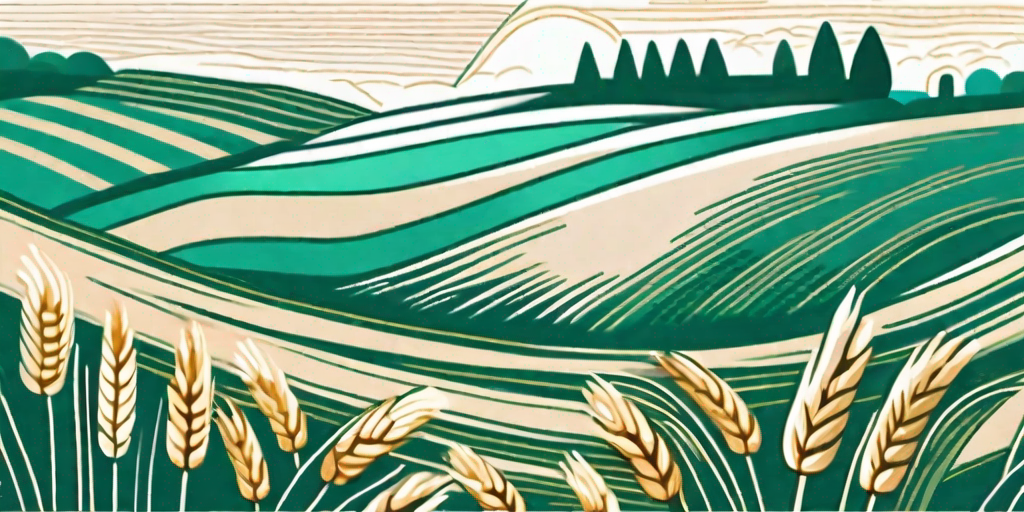
Welcome, dear reader, to the world of wheat, where we'll embark on a journey from the humble field to your flour-filled pantry. It's a tale of transformation, a story of sweat and soil, and a testament to the tireless toil of farmers. So, buckle up, and let's dive into the golden sea of wheat!
The Birth of Wheat: Planting and Growing
Planting the Seeds
Our journey begins with a tiny, unassuming wheat seed. Farmers, the unsung heroes of our tale, plant these seeds in the autumn. They use a piece of machinery called a drill, which, despite its name, doesn't involve any actual drilling. Instead, it places the seeds in neat rows, covering them with soil. It's a bit like tucking the seeds into bed for their winter sleep.
Now, you might be wondering why farmers plant wheat in the autumn. Well, it's all about giving the seeds a head start. The cool winter months allow the seeds to germinate and establish roots, preparing them for a growth spurt in the spring. It's a bit like sending the seeds to boot camp before the big game.
The Growing Phase
As spring arrives, our little wheat seeds start their transformation. They sprout leaves and begin to grow, fuelled by the warming sun and nourishing rain. This is the vegetative phase, where the wheat plants focus on growing taller and stronger. It's a bit like the awkward teenage phase, but for plants.
By early summer, the wheat plants are ready to reproduce. They produce heads, which are clusters of flowers. Each flower has the potential to produce a grain of wheat. It's a bit like a botanical version of speed dating.
The Harvest: Reaping the Golden Bounty
Knowing When to Harvest
Harvesting wheat is a bit like baking a cake. You can't rush it. The wheat needs to be just right. Too early, and the grains are too moist. Too late, and they're too dry. Farmers look for a golden color and a hard texture. They might even bite into a grain to test it. It's a bit like the farmer's version of the 'Goldilocks and the Three Bears' story.
Once the wheat is ready, it's time for the combine harvester to shine. This impressive machine cuts, threshes, and separates the wheat in one fell swoop. It's a bit like a multi-talented performer on a farming talent show.
Storing and Transporting the Harvest
After harvesting, the wheat is stored in large silos to protect it from the elements and pests. It's a bit like a high-security vault for grains. The wheat is then transported to mills, where it begins its transformation into flour. It's a bit like the wheat's journey to Hollywood, where it's about to become a star.
Transporting the wheat involves trucks, trains, and sometimes even ships. It's a bit like a road trip, but for wheat. The journey can be long and arduous, but it's all worth it when the wheat reaches its final destination: the mill.
The Transformation: From Wheat to Flour
Grinding the Grains
At the mill, the wheat is cleaned and conditioned to prepare it for grinding. The grains are then ground into flour. It's a bit like a wheat spa day, followed by an intense workout.
The grinding process involves breaking the wheat kernels into their component parts: the bran, the germ, and the endosperm. The endosperm is the part that's used to make white flour. It's a bit like a wheat anatomy lesson.
Packaging and Distribution
Once the flour is ground, it's packaged and ready for distribution. It's a bit like the wheat's graduation day. The flour is then shipped to stores, bakeries, and homes around the world, ready to be transformed into delicious bread, cakes, and pastries. It's a bit like the wheat's world tour.
And that, dear reader, is the fascinating journey of wheat, from field to flour. It's a tale of transformation, a story of sweat and soil, and a testament to the tireless toil of farmers. So, the next time you enjoy a slice of bread or a piece of cake, spare a thought for the humble wheat grain and its incredible journey.
FAQs
- When is wheat harvested?
Wheat is typically harvested in the summer, from July to September, depending on the climate and the variety of wheat.
- How is wheat turned into flour?
Wheat is turned into flour through a process of cleaning, conditioning, and grinding. The wheat kernels are broken down into their component parts, and the endosperm is ground into flour.
- What is the difference between white and whole wheat flour?
White flour is made from the endosperm of the wheat kernel, while whole wheat flour includes the bran and germ as well. This gives whole wheat flour a darker color and a higher fiber content.
Conclusion
So there you have it, the fascinating journey of wheat from field to flour. It's a tale filled with hard work, patience, and a little bit of magic. So, the next time you bite into a sandwich or enjoy a piece of cake, remember the journey that the humble wheat grain has taken to get to your plate. Bon appétit!











